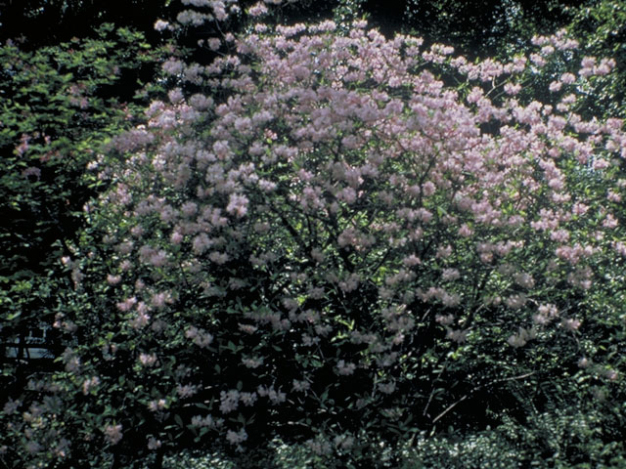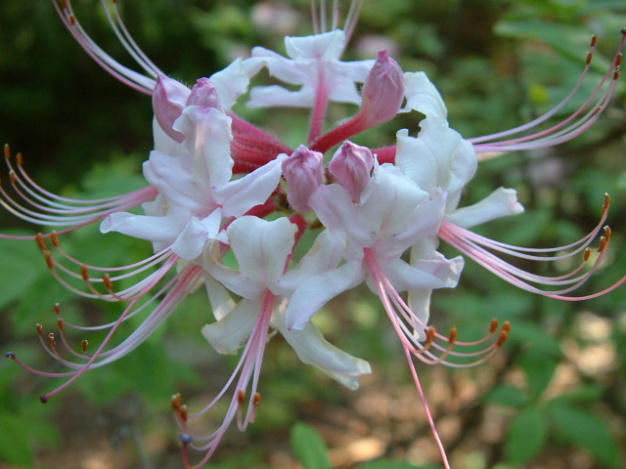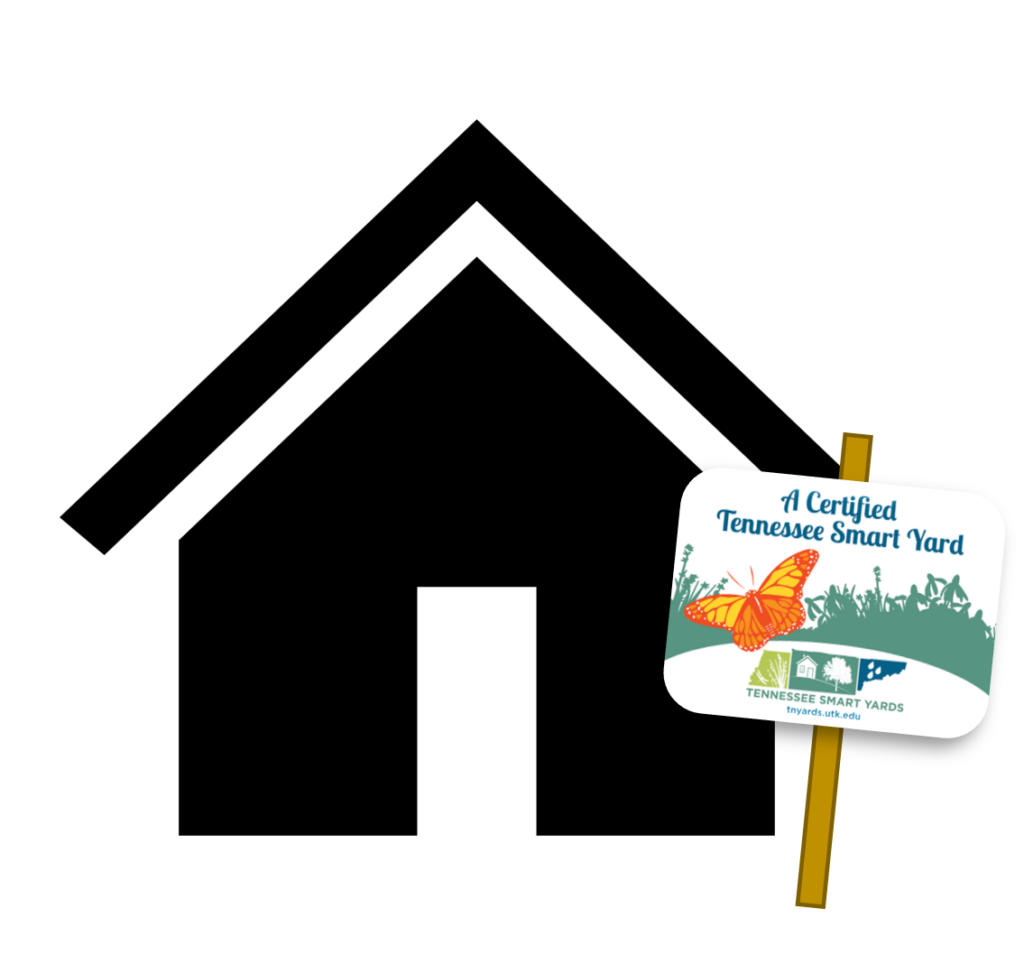
Common Name: Pinxterbloom Azalea
Full sun to light shade; medium to moderately dry moisture level; best in humusy rich organic soil but tolerates coarse, gravelly or sandy loams, thin soils over bedrock, fine silt loams, sandy clay loams and sandy peat; demands strongly acid to moderately acid pH.
3-8 feet height by 3-5 feet spread; blooms in April – May; pink to purplish flowers; fruits are a woody capsule.
Growth Rate: Slow. Colonizes slowly by stolons.
Maintenance: Frequent disease and insect problems. Good cultural practices help reduce damage. Use a yearly addition of organic mulch to retain moisture and reduce temperature fluctuations. Avoid application of fertilizers which tend to create fertilizer burns. Rhododendrons are sensitive to high levels of fertilizer salts.
Propagation: Seed propagation code A. Moderately easy from seed and difficult by cuttings. Seeds need to be mixed loosely into a sphagnum moss and sprinkled lightly over a 2:1 perlite/peat mixture and germinated under a mist or in a plastic tent at 45-50 degrees F.
Native Region: East Tennessee; lightly in western Highland Rim and West Tennessee uplands
Upright, multi-stemmed deciduous shrub. Flowers have a faint honeysuckle fragrance. Prefers a sun dappled or high open shade. Best grown in humusy, organically rich soil. Tolerates dryish sandy or rocky soils. All parts are poisonous to humans. Low wildlife value. Attracts hummingbirds and bees.

